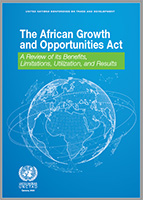
The Generalized System of Preferences (GSP) was proposed in 1964 at the first quadrennial conference of the United Nations Conference on Trade and Development (UNCTAD), which has a lengthy association with trade preferences as a tool of development.
Like the GSP, the African Growth and Opportunities Act (AGOA) and other preferential trade programs are founded upon the concept that mutually beneficial North-South trade offers a more certain and sustainable path to development than aid, and that preferences can help overcome the structural disadvantages that developing countries face.
While preferential market access can, indeed, give developing countries a trade boost, that effect varies greatly by exporting country and by sector. Tariff preferences are obviously moot for any products that are already duty-free on a most-favored-nation (MFN) basis and are only of limited value when MFN tariffs are low.
Even for some goods that might otherwise be subject to significant tariffs, other factors may carry equal or greater weight in determining the magnitude and diversity of sub-Saharan countries’ exports. On the importing country’s side, these include non-tariff measures such as sanitary and phytosanitary barriers, standards, and so forth; on the exporting countries’ side, these include inter alia the country’s endowments of natural resources, the capacity of its workforce, the cost and reliability of its energy system, and the efficiency of the port and shipping services on which its exporters rely.
Thus, while preferences have had a beneficial effect in some sectors, on their own they offer neither a necessary nor a sufficient explanation for changes in trade patterns over time. Several other considerations, ranging from shifting patterns in United States energy production and imports, to the phase-out of textile and apparel import quotas, have been even more influential in determining what products the United States imports and where they originate.
One may readily find examples of sub-Saharan African industries that have done well without receiving AGOA preferences, and others for which exports have stagnated or even declined despite duty-free privileges.
The four analytical sections that comprise this submission assess the AGOA program in progressively more specific levels.
Section II addresses the overall relationship between poverty, trade preferences, and other instruments intended to promote economic development.
Section III reviews the positive but limited impact of preferences can be seen in the utilization of the AGOA preferences. There differing experiences according to country and sector are assessed. The sectoral differences are examined more precisely in the next two sections, each of which address the United States International Trade Commission (USITC)’s stated intention to present case studies on cotton, apparel, certain chemicals, and cocoa.
Section IV reviews the broader trends in United States imports of apparel, minerals, and other products from the region.
Section V turns to the question of whether AGOA preferences have helped beneficiary countries to upgrade their production and exports in hydrocarbons, cocoa, and cotton goods.
Section VI concludes by providing specific considerations for the improvement of AGOA.





